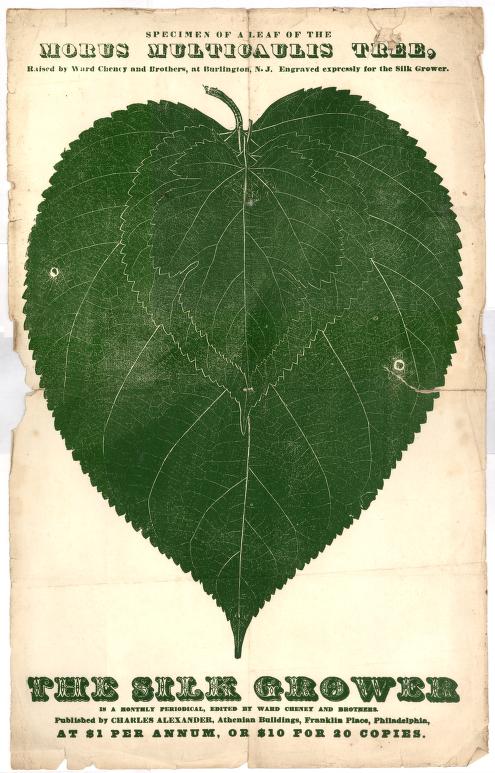




Advanced Search
| Online Collection |
|
||||||||||||||||||||
|
A huge leaf from the morus multicaulis mulberry tree, whose leaves are required to raise silk worms, fills this broadside. In 1832 Samuel Whitmarsh wanted to start a silk plant in Florence, Massachusetts, and planted many acres of multicaulis mulberry trees. But it was not successful; it never made much silk. So in 1838 Whitmarsh decided to sell the trees he had planted. In articles and advertisements, he promoted the multicaulis malberry as the best possible mulberry tree, raving about the tree's rapid growth and huge leaves. He claimed that everyone would make money making silk with these trees. Morus multicaulis became wildly popular and its price exploded. In 1835 it sold for ten cents a tree, and by winter, 1838, one tree cost nearly a dollar. People bought and sold trees just to make a profit. Thousands of farmers, particularly in New England, prepared land for mulberry trees, tearing out other crops. But just as quickly the price dropped. By Fall 1839, the price was lower than before Whitmarsh started the craze, leaving many mulberry speculators bankrupt. Hard winters followed, killing off most of the trees.
|
"Specimen of a Leaf of the Morus Multicaulis Tree for The Silk Grower"
|
| |
Home | Online Collection | Things
To Do | Turns
Exhibit | Classroom | Chronologies | My
Collection
About This Site | Site Index | Site Search | Feedback


